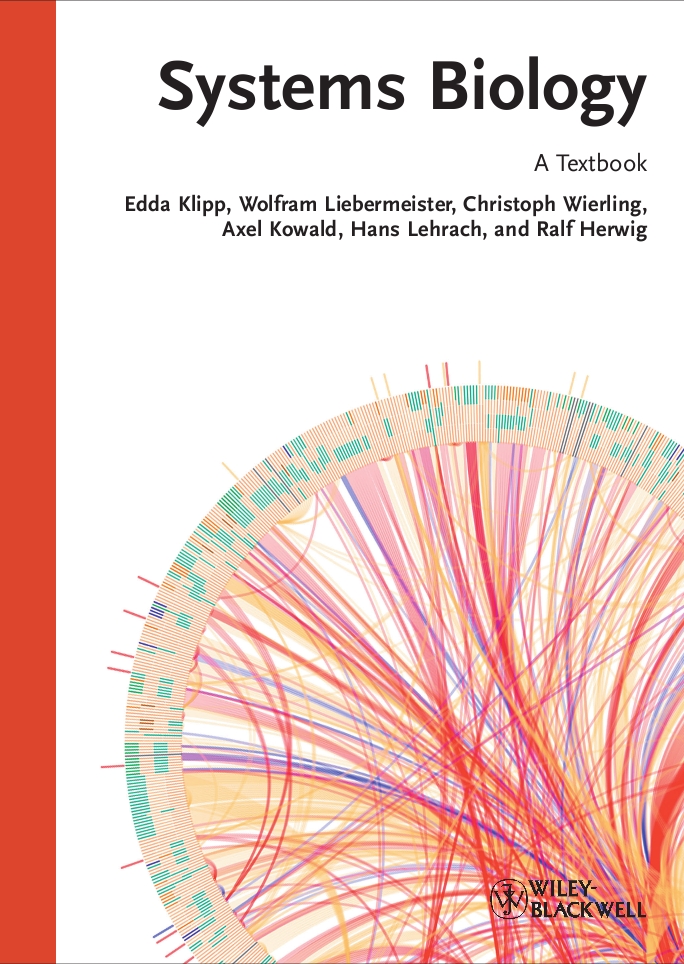Extracts of 'Systems Biology'- A Textbook
Systems biology is a new emerging discipline that aims at a deeper understanding of complex biological systems which components that interact in a non-linear way. It is notoriously difficult to get an intuitive feeling for the behavior of these types of systems and the approach is therefore to combine mathematical modelling with appropriate experiments. Obviously many numerical data are needed for this, such as data on enzyme kinetic parameters, enzyme and metabolite concentrations, affinity constants and degradation rates. For this a close cooperation between modeller and experimentalist is needed and intended. In the last years we have, together with colleagues, written two books about methods, tools and strategies in systems biology (Systems Biology in Practice and Systems Biology- A Textbook) that have been published by Wiley-VCH.
Chapter I: Introduction
1.1 Biology in Time and Space 3
1.2 Models and Modeling 4
1.2.1 What is a Model? 5
1.2.2 Purpose and Adequateness of Models 5
1.2.3 Advantages of Computational Modeling 6
1.3 Basic Notions for Computational Models 7
1.3.1 Model Scope 7
1.3.2 Model Statements 8
1.3.3 System State 8
1.3.4 Variables, Parameters, and Constants 8
1.3.5 Model Behavior 9
1.3.6 Model Classification 9
1.3.7 Steady States 9
1.3.8 Model Assignment is not Unique 10
1.4 Data Integration 11
1.5 Standards 12
→ Chapter1.pdf
Chapter II: Modeling of Biochemical Systems
2.1 Kinetic Modeling of Enzymatic Reactions 13
2.1.1 The Law of Mass Action 14
2.1.2 Reaction Kinetics and Thermodynamics 15
2.1.3 Michaelis–Menten Kinetics 18
2.1.4 Regulation of Enzyme Activity by Effectors 22
2.1.5 Generalized Mass Action Kinetics 29
2.1.6 Approximate Kinetic Formats 30
2.1.7 Convenience Kinetics 30
2.2 Structural Analysis of Biochemical Systems 31
2.2.1 Systems Equations 31
2.2.2 Information Encoded in the Stoichiometric Matrix N 34
2.2.3 Elementary Flux Modes and Extreme Pathways 36
2.2.4 Conservation Relations: Null Space of NT 39
2.3 Kinetic Models of Biochemical Systems 42
2.3.1 Describing Dynamics with ODEs 42
2.3.2 Metabolic Control Analysis 51
2.4 Tools and Data Formats for Modeling 63
2.4.1 Simulation Techniques 64
2.4.4 Data Resources 75
